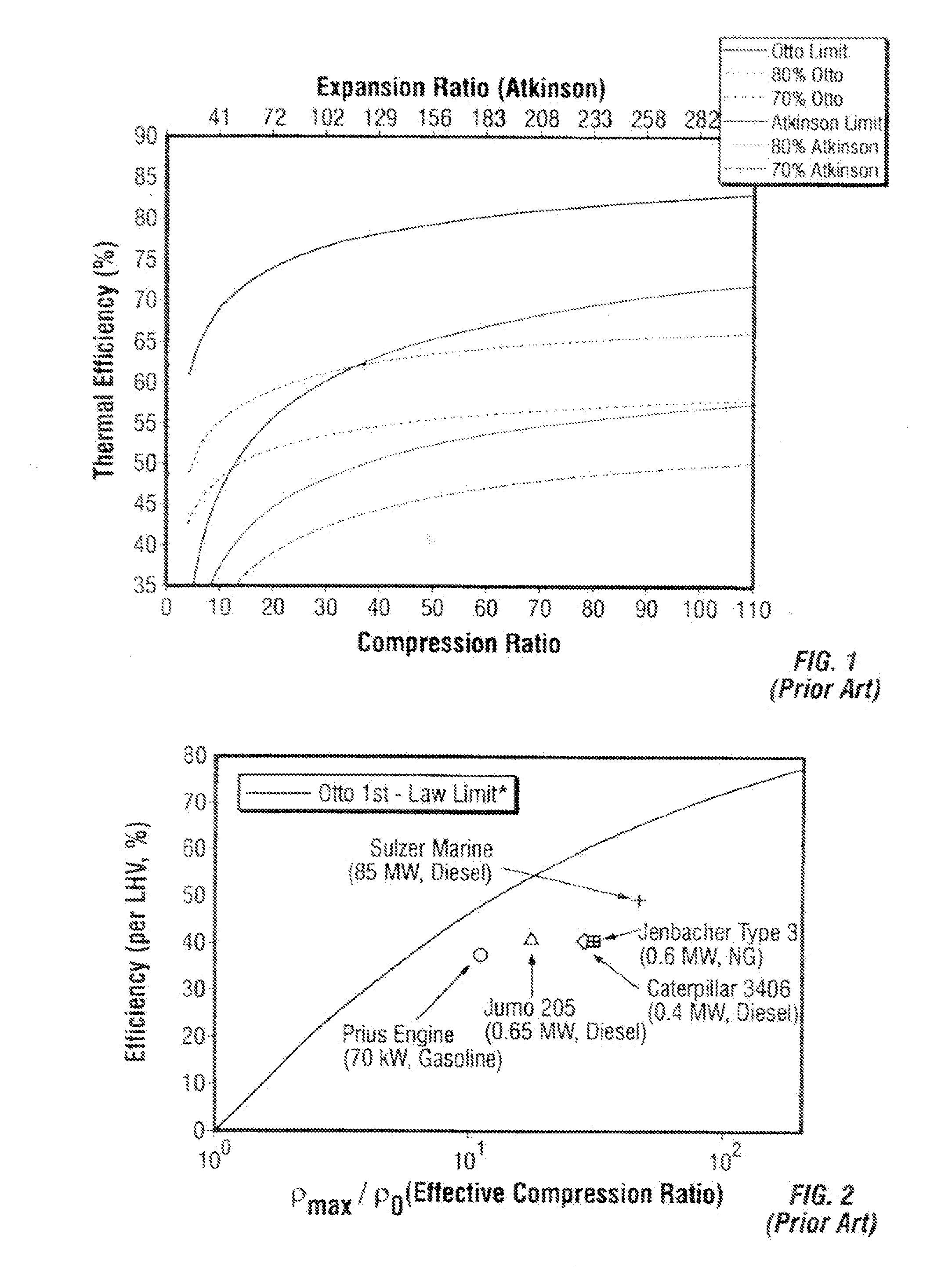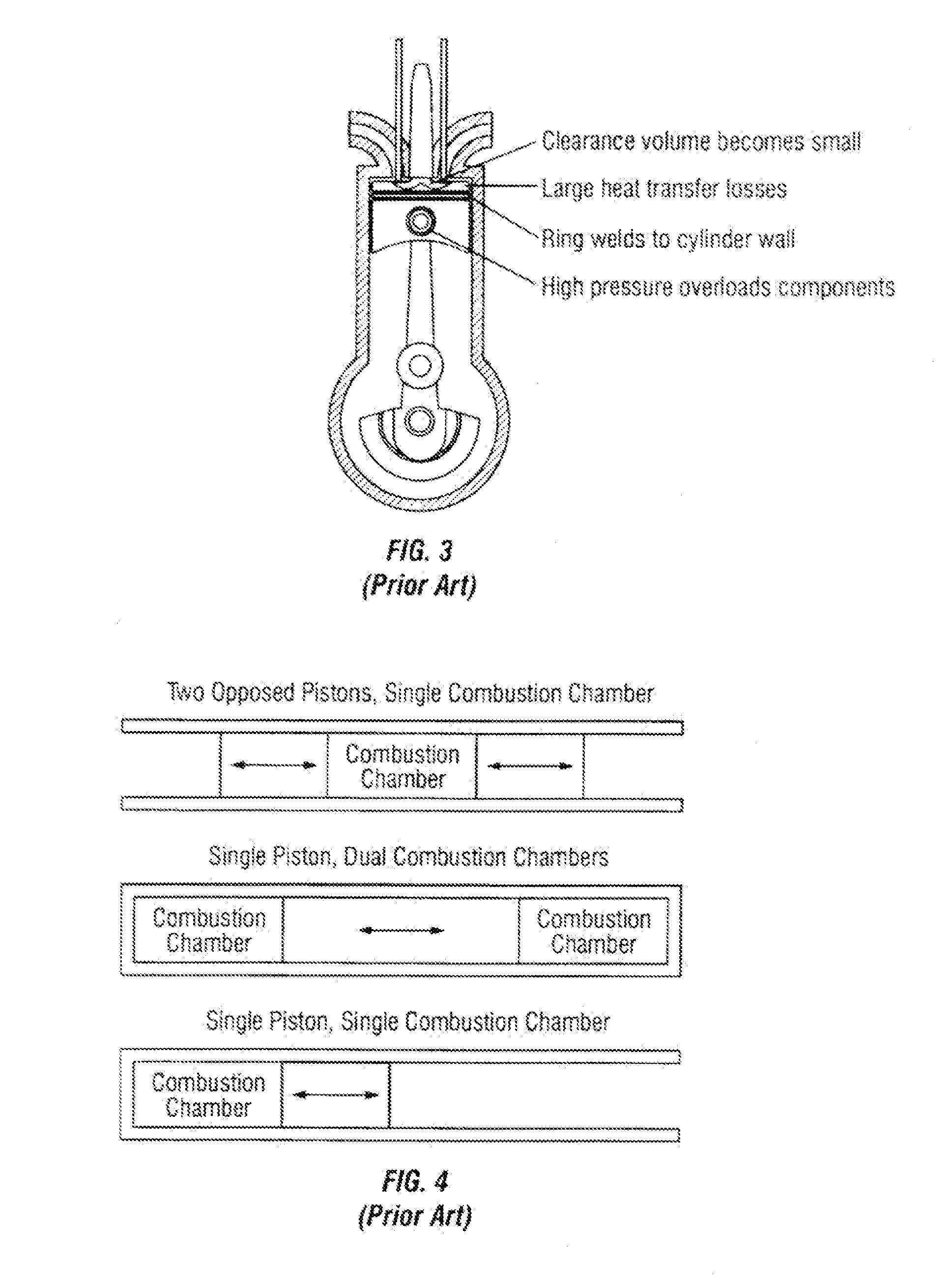High-efficiency linear combustion engne
a linear combustion engine and high-efficiency technology, applied in combustion engines, reciprocating piston engines, positive displacement engines, etc., can solve the problems of cycle having a higher theoretical efficiency limit, increasing the theoretical efficiency limit of the engine, and increasing the theoretical efficiency limit even further. , to achieve the effect of increasing the thermal efficiency of internal combustion engines
- Summary
- Abstract
- Description
- Claims
- Application Information
AI Technical Summary
Benefits of technology
Problems solved by technology
Method used
Image
Examples
Embodiment Construction
[0011]Various embodiments of the present invention provide high-efficiency linear combustion engines. Such embodiments remedy the issues that prohibit conventional engines from reaching high compression / expansion ratios by utilizing a free-piston engine architecture in conjunction with a linear electromagnetic machine for work extraction and an innovative combustion control strategy. The invention disclosed herein provides a means to increase the thermal efficiency of internal combustion engines to above 50% at scales suitable for distributed generation and / or hybrid-electric vehicles (5 kW-5 MW).
[0012]One embodiment of the invention is directed toward a linear combustion engine, comprising: a cylinder having a cylinder wall and a pair of ends, the cylinder including a combustion section disposed in a center portion of the cylinder; a pair of opposed piston assemblies adapted to move linearly within the cylinder, each piston assembly disposed on one side of the combustion section op...
PUM
 Login to View More
Login to View More Abstract
Description
Claims
Application Information
 Login to View More
Login to View More - R&D
- Intellectual Property
- Life Sciences
- Materials
- Tech Scout
- Unparalleled Data Quality
- Higher Quality Content
- 60% Fewer Hallucinations
Browse by: Latest US Patents, China's latest patents, Technical Efficacy Thesaurus, Application Domain, Technology Topic, Popular Technical Reports.
© 2025 PatSnap. All rights reserved.Legal|Privacy policy|Modern Slavery Act Transparency Statement|Sitemap|About US| Contact US: help@patsnap.com



